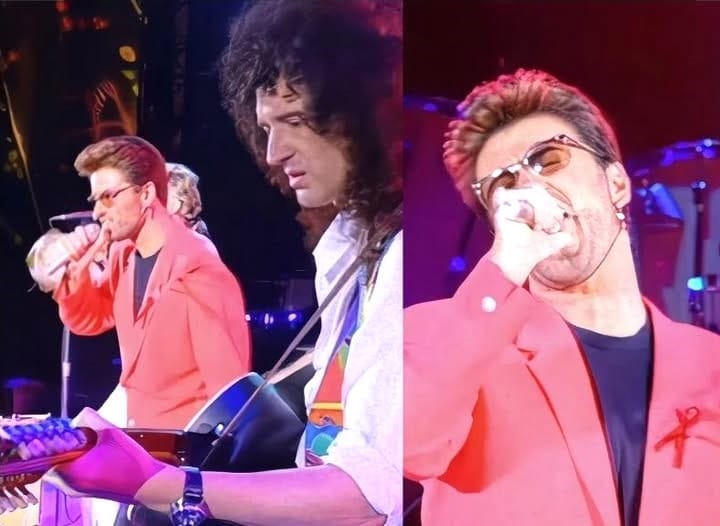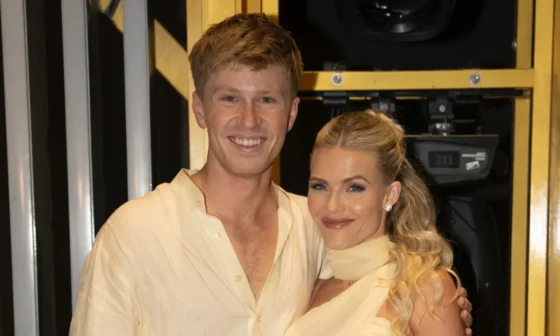On a rain-soaked evening in April 1992, London’s Wembley Stadium became the epicenter of one of the most unforgettable musical events in history: the Freddie Mercury Tribute Concert. Among the star-studded lineup, it was George Michael who delivered the night’s most transcendent moment. When he stepped onto the stage to sing Queen’s monumental anthem, “Somebody to Love,” the 72,000 fans in attendance—and millions watching worldwide—felt as if Freddie himself had returned.
Clad in a crisp black suit, Michael appeared both nervous and resolute as he took command of the complex, multi-octave arrangement. With the surviving members of Queen and a soaring gospel choir behind him, he didn’t merely sing the song; he inhabited it. Each lyric carried raw emotion, each high note soared with precision and power, and every phrase honored Freddie’s flamboyant brilliance while revealing Michael’s own artistic depth. For six unforgettable minutes, it wasn’t a memorial—it was a resurrection. Fans described it as a “conversation across time,” a moment where grief turned into celebration, and sorrow gave way to cathartic release.
But beyond the grandeur of that performance lay another moment, quieter yet equally powerful, often overlooked amid the stadium-shaking anthems: George Michael’s collaboration with Queen on “’39.” Now, thanks to newly remastered HD footage, the performance shines in stunning clarity.
Unlike the towering spectacle of “Somebody to Love,” this was intimacy in its purest form. On a smaller platform, Brian May led with intricate acoustic guitar fingerpicking, joined by Roger Taylor and John Deacon on harmonies. Michael, dressed simply in a black shirt and jeans, stood not as a pop superstar but as a humble musician among equals. With eyes often closed, he blended his rich baritone into the group’s delicate harmonies, his voice a seamless extension of Queen’s timeless sound.
When his harmonica solo arrived, it was a moment of pure artistry—a bluesy, wistful sigh that carried the song’s themes of longing and the passage of time. The HD remaster reveals the unspoken magic: May’s approving nods, Taylor’s smile, and Deacon’s quiet rhythm anchoring the ensemble. What emerged was not a guest appearance, but a communion of musicians paying homage to a fallen friend.
Together, these two performances—one triumphant and soaring, the other tender and understated—cemented George Michael’s place in rock history. He proved not only that he could stand shoulder to shoulder with one of the greatest bands of all time, but that he could channel the essence of Freddie Mercury without imitation.
Decades later, these moments remain jewels in the crown of Queen’s legacy and in George Michael’s career—a reminder that music’s true power lies in its ability to unite, to heal, and to transcend time.






